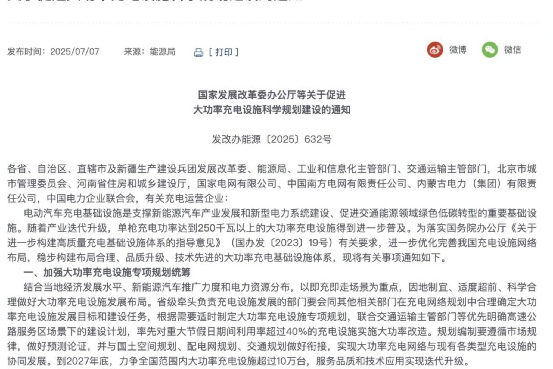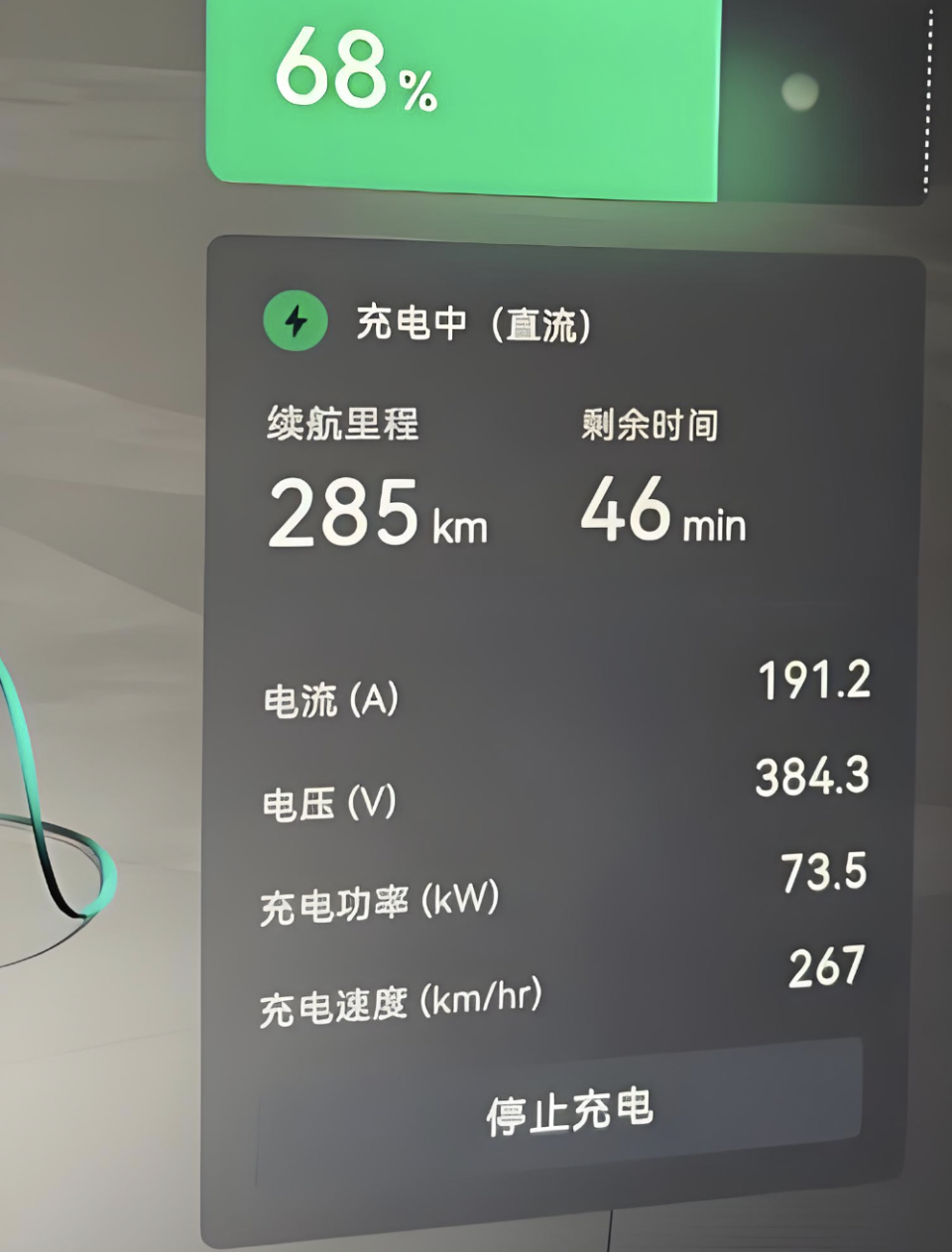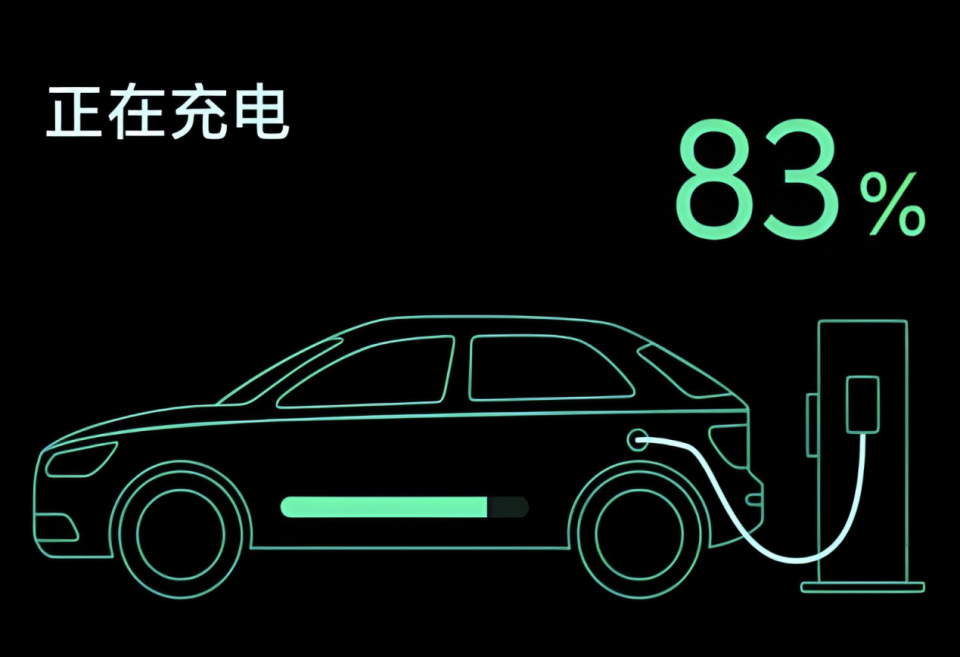High-Power Charging Piles Usher in 'Charge and Go' Era, Alleviating Holiday Charging Queues
![]() 07/10 2025
07/10 2025
![]() 683
683
Recently, the National Development and Reform Commission, along with three other ministries, jointly issued the "Notice on Promoting the Scientific Planning and Construction of High-Power Charging Facilities." This "Notice" clearly outlines a strategy for regions to tailor the development of high-power charging infrastructure to local conditions, fostering a seamless 'charge and go' experience.
According to the "Notice," regions will prioritize the high-power retrofitting of charging facilities in highway service areas during major holidays, where utilization rates exceed 40%. The aim is to have over 100,000 high-power charging facilities nationwide by the end of 2027.

Currently, the challenge of highway charging during holidays stands out as a significant hurdle in promoting new energy vehicles (NEVs), rooted in complex factors such as supply-demand imbalance, facility layout, and technical limitations.
The release of this "Notice" signifies that relevant ministries and commissions have recognized this issue, heralding a future where NEV owners can travel with greater ease.
High-Power Retrofitting of Highway Charging Stations
A closer look at the "Notice" reveals two pivotal points: the focus on highways and the retrofitting of charging facilities. This aligns with the broader context of the rapid expansion of both charging infrastructure and NEV models.
Data from the National Energy Administration reveals that by the end of 2024, China boasted 12.818 million charging facilities, a year-on-year increase of 49%. In the same year, total charging volume surpassed 110 billion kWh, marking a 38% year-on-year growth. Despite this, the surge in NEV numbers necessitates an accelerated pace in charging infrastructure development, particularly addressing the 'charging tides' during holiday travel peaks.
Statistics from the Ministry of Public Security indicate that in 2024, China had 31.4 million NEVs, accounting for 8.90% of total vehicles. On highways, a single charging station served nearly 200 NEVs.
During the 2024 National Day holiday, the electric vehicle charging volume on national highways reached 72.1527 million kWh, averaging 10.3075 million kWh daily—a 34% increase from the 2024 May Day holiday's average daily volume and an 80% jump from the 2023 National Day holiday's average.
Holiday traffic jams and long queues for charging are common occurrences, with some extreme cases seeing owners resorting to portable diesel generators after waiting for over two hours.
The 'charge and go' scenario proposed in the "Notice" aims to address this queuing issue head-on.
Given this backdrop, the high-power retrofitting of charging facilities has become imperative. 'High-power' refers to a single-gun charging power of 250kW or more, significantly enhancing charging efficiency and alleviating owners' anxiety. Currently, mainstream DC fast charging stations in highway service areas operate between 60kW and 120kW. A 60kW station can charge an electric vehicle (with a 50-80kWh battery) to 80% in 30-40 minutes, while a 120kW station reduces this to 20-30 minutes. However, this efficiency falls short during holiday charging peaks.

With a charging power of 250kW, efficiency improves by 2-3 times. Intelligent dispatching systems combined with 250kW supercharging stations have reduced average waiting times from 2 hours to 20 minutes in some Beijing-Hong Kong-Macao Expressway service areas.
This trend extends beyond highways; many regions are also advancing high-power charging infrastructure. For instance, Beijing aims to establish over 1,000 supercharging stations (with more than 2,000 supercharging piles) by 2025. By 2035, high-quality supercharging stations will reduce average charging time to less than 8 minutes, mirroring the convenience of refueling. Chongqing plans to accelerate the deployment of supercharging and energy replenishment networks for heavy-duty trucks by 2025, with Chongqing as the hub, and to construct the first batch of 10 megawatt-level heavy-duty truck supercharging demonstration stations.
Automakers Embrace Megawatt Flash Charging Technology
In addition to the high-power charging facility retrofitting outlined in the "Notice," several domestic automakers have established their own high-power charging networks, including GAC AION, ZEEKR, Tesla, XPeng, Li Auto, and others. These automakers are progressively opening their charging networks to facilitate cross-brand charging interoperability. For example, Tesla opened 10 supercharging stations and 120 destination charging stations in China for a pilot program in April 2023, covering 37 non-Tesla models. Li Auto's 5C supercharging stations and urban supercharging stations are accessible to all NEV users. Xiaomi Automobile announced a charging and energy replenishment network collaboration with NIO, XPeng, and Li Auto. Since 2024, multiple automakers such as Changan, Geely, SAIC-GM, XPeng, and IM Motors have joined the NIO charging network. As of January 3 this year, NIO has access to over 1.17 million third-party charging piles.
In terms of charging power, automakers' advancements are even more remarkable. By 2025, BYD, Huawei, ZEEKR, and CATL will offer charging powers reaching the megawatt level. Simply put, 'megawatt charging' involves ultra-high voltage (1000V) and ultra-high current (1000A) support, enabling charging speeds comparable to refueling.
Specifically, BYD's megawatt flash charging technology boasts a peak power of 1000kW (1 megawatt), supporting a 1000V high-voltage platform and 1000A current input. It has been tested to add 400 kilometers of range in 5 minutes, with a peak charging speed of '2 kilometers per second.' Vehicles equipped with this technology are fully compatible with existing public fast charging stations, eliminating the need for users to be selective. The unique 'dual-gun charging' technology doubles the charging power, transforming public stations into supercharging stations and reducing charging time by 70% compared to industry standards.
Huawei's full liquid-cooled megawatt-level supercharging technology offers a peak power of 1.5 megawatts, replenishing 20 kWh of energy per minute. For heavy-duty trucks with a 300 kWh battery, it can charge to 90% in just 15 minutes. ZEEKR announced that its V4 supercharging megawatt pile achieves a single-gun peak power of 1.3 megawatts and a single-gun peak current of 1300A, totaling 1440kW in dual-gun mode. CATL's second-generation EnvisionAE supercharging battery supports a 12C peak charging rate, corresponding to 1300kW. This battery can add 75 kilometers of range in 30 seconds, translating to 2.5 kilometers per second.

With future resolutions to issues such as grid adaptation, cost sharing, and vehicle compatibility, these megawatt-level charging networks will also achieve interoperability through collaboration.
People's Car Reviews
The issuance of this "Notice" signifies that China's NEV replenishment system has officially embarked on a coordinated development path towards 'high-power supercharging,' with cross-brand interoperability on the horizon. This endeavor necessitates the concerted efforts of multiple stakeholders, from policy guidance to automaker initiatives.







